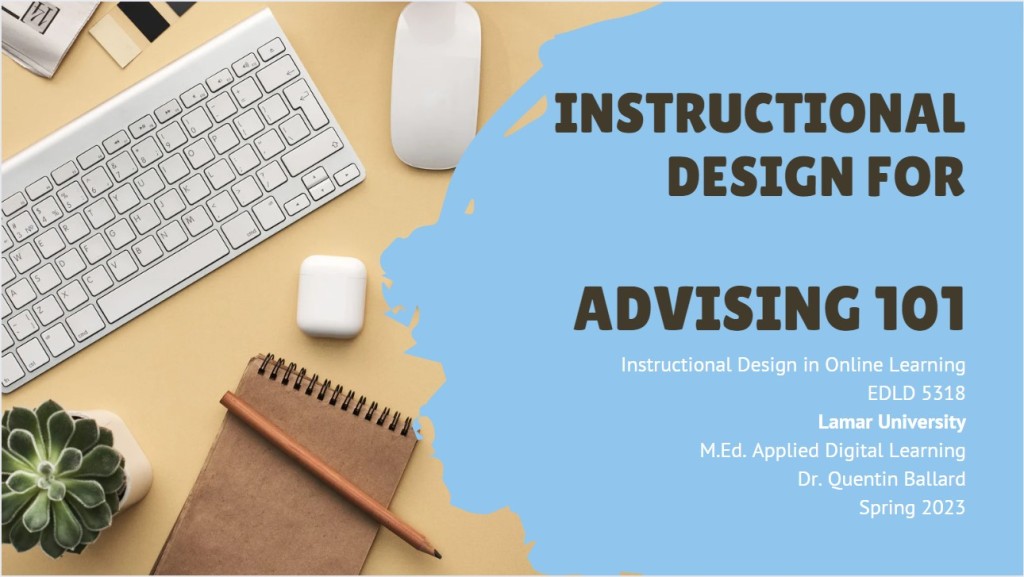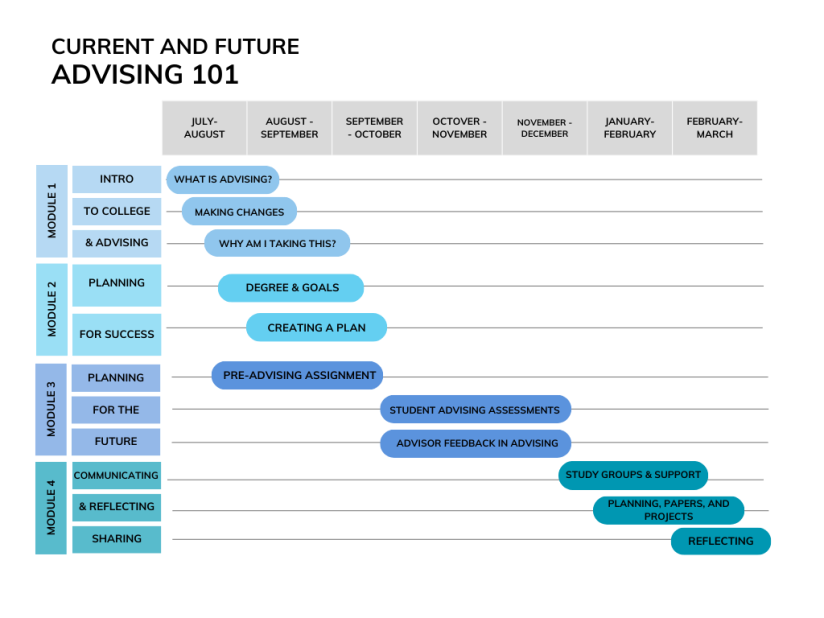Throughout the EDLD 5318 Instructional Design in Online Learning course, I have been challenged to take the words, thoughts, and dreams behind my innovation and turn them into an actual course with which users can interact. The whole innovation idea was created from a two-fold desire to relieve advisors while equipping students with the knowledge advisors can share about navigating the college experience.
Planning using the ADDIE Model of instructional design and focusing on aligning outcomes, activities, and assessments in a thoughtful and focused course design. Using Fink’s 3 Column table, the focus remains continually on the learning. The usability testing phase of this process allowed me to evaluate if learners have a positive advising framework and introduction to topics that can be overwhelming and difficult to process in 30-minute advising sessions.
Instructional Design

With intentional instruction design, our online learning can create a significant learning environment. Through the Advising 101 course, incoming college students experience authentic learning opportunities with the guidance of an online resource of advisors’ knowledge and information.
Implementation

Extending and expanding the development of trusted relationships beyond one-on-one advising, the Advising 101 course facilitates learning opportunities to help learners create meaning of their first semester in college.
Usability and Reflection

Reviewing the course design through usability testing reveals the users’ experience. Observing users interact with the course design by completing various tasks allows additional reflection and refinement to ensure that the Advising 101 course is not frustrating to learners and that the intended purpose is being fulfilled.

View in Canva
Contributions to Learning
The ADL program encourages learning to share thoughts, ideas, and innovation projects with our learning community members, which helps us refine and improve upon them.

By contributing to the learning of my learning community, I also contribute to my understanding. This contributions summary outlines how I contributed to my and my classmates’ learning throughout this course.
References
Bates, A.W. (2019). Teaching in a Digital Age: Guidelines for designing teaching and learning. https://opentextbc.ca/teachinginadigitalage/
Harapnuik. D. (2021). Assessment Of/For/As learning. https://www.harapnuik.org/?page_id=8900
Revised Bloom’s taxonomy. (n.d.). Iowa State University Center for Excellence in Learning and Teaching. Retrieved July 6, 2023, from https://www.celt.iastate.edu/teaching/effective-teaching-practices/revised-blooms-taxonomy/
